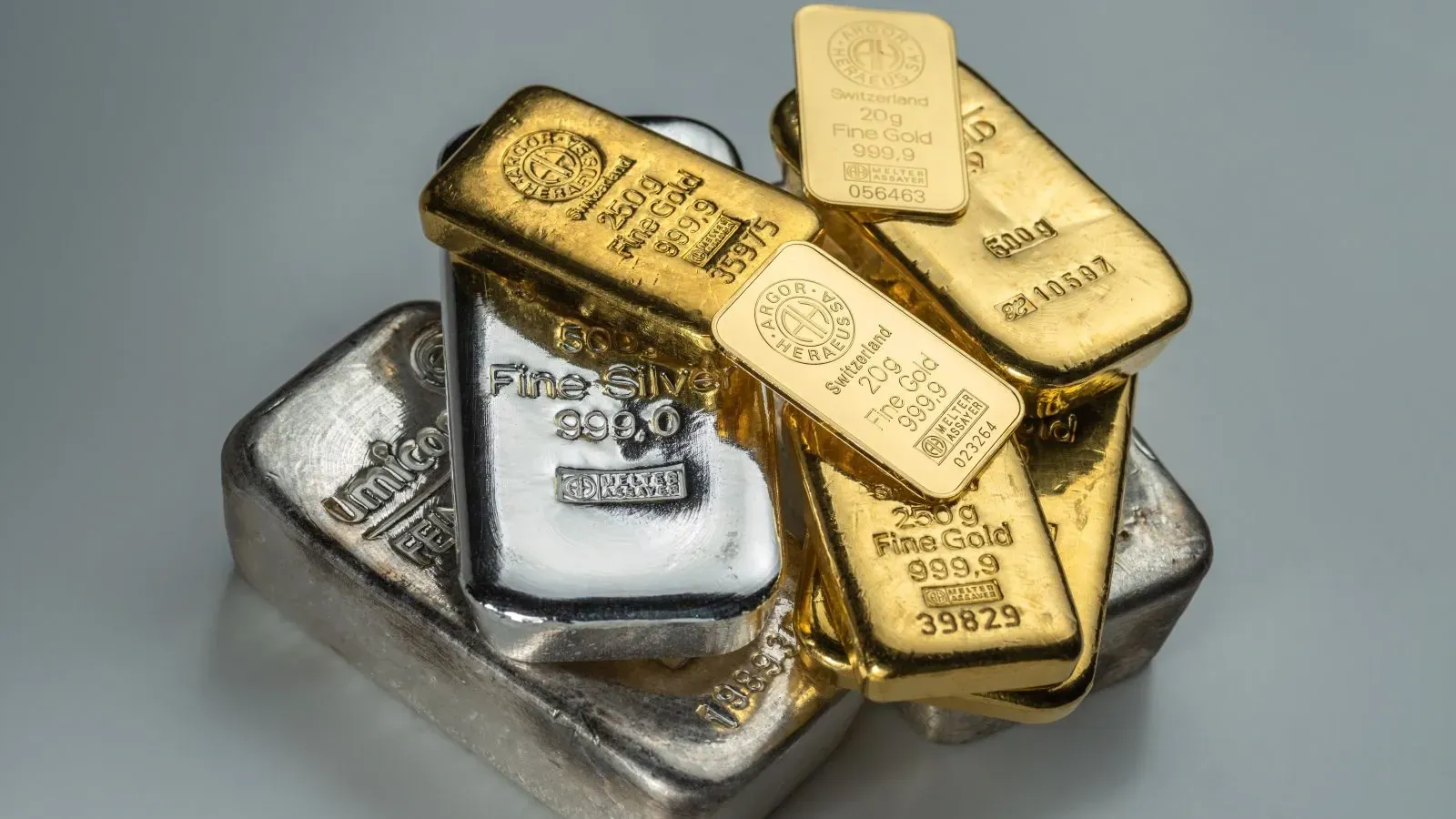Gold vs Silver: Which is Better as an Investment?
Written by Pradnya Surana
5 min read | Updated on November 18, 2025, 14:33 IST

Walk into any Indian household and you will find gold, in the forms of ornaments, bars or even the digital formats like mutual funds and electronic traded funds (ETFs). But silver? The allure is significant but slightly less than gold.
Given the cost differences in both, silver is more affordable. You can get 1kg of silver in price of 10 grams of gold (approximately). And it is precious and noble. So, you find silver extensively in heavy ornaments, statues of Gods and Goddesses and even utensils.Silver has outperformed gold during specific periods, delivering 15-20% annual returns when industrial demand had surged. The question isn't whether to invest in precious metals, but rather which one should you prioritise in your portfolio.
The answer isn't straightforward. Gold and silver serve different purposes, have unique risk profiles and have different demand drivers. Understanding these differences helps you build a well diversified portfolio aligned with your financial goals and risk tolerance.
Why the Difference?
Gold's primary driver is investment demand,it's a store of value, crisis hedge and portfolio diversifier. Silver splits between investments and industrial usage. Thus silver is sensitive to both economic uncertainty and manufacturing cycles.
We can infer that gold offers steadier, more predictable returns. Silver delivers higher volatility with chances for high gains during industrial booms and losses during recessions.
Volatility of Gold & Silver
Gold's daily price movement is around 2-3%. Silver routinely moves 4-6% in a day, sometimes spiking 10%+ during high volatility.
This volatility is the result of silver's smaller market size. Global gold market capitalisation exceeds $12 trillion whereas silver’s is just around $1.5 trillion. High volume institutional trades move silver prices significantly. Same trade volumes, gold absorbs with minimal impact.
Industrial Demand
Gold's primary use is jewellery (50%) and investment (40%), with minimal industrial application. Silver is fundamentally different. 60% goes to industrial uses including electronics, solar panels, medical equipment and batteries.
This industrial demand makes silver responsive to economic growth. When GDP expands, manufacturing rises, and silver prices follow. The global inclination toward renewable energy particularly benefits silver. Each solar panel contains 20 grams of silver. With solar capacity expected to rise steadily over the next few years, silver’s demand is expected to rise.
Liquidity
Try selling 1 kg of silver in India. You will probably have to visit multiple dealers, face skeptical buyers. Sell 10 grams of gold? Every jeweller, bank and even pawn shop competes for your business. As of Oct 2025, with ₹ 1.25 lakhs, you can buy around a kg of silver or 10 grams of gold. Both holding and selling 10 gms gold is easier than 1kg silver.
Moreover, silver's physical bulkiness creates storage challenges. A ₹1.25 lakh gold investment weighs 10 grams (prices used for example, they may vary from time to time) the equivalent silver investment weighs 1 kilograms (approximately), 100 times heavier. Storage, transportation and security costs favour gold slightly.
Affordability and Accessibility
Silver's lower price point makes it accessible to smaller investors. In India, as of Oct 2025, you can buy meaningful silver quantities for Rs.10,000, with this same amount, you cannot even buy a gram of gold; less than a gram .
However, both metals are now accessible from ₹100-500 through ETFs, levelling the affordability playing field.
The affordability argument matters primarily for physical metal buyers preferring tangible assets.
Ways to Invest In Gold & Silver
How to Buy Gold,
- Can buy through ETFs like for eg, SBI Gold ETF, HDFC Gold ETF. They have expense ratio 0.5-1%
- You can buy Sovereign Gold Bonds and gain2.5% annual interest. Capital gains in gold are tax-free after 8 years
- You can buy Digital gold through Fintech platforms
- Can buy physical gold in the form of coins, bars from banks or jewellers or even ornaments
How to Buy Silver
- Silver ETFs are available for investment like Nippon India Silver ETF, Axis Silver ETF (expense ratio 0.6-1%)
- Physical silver can be bought in form of coins, bars, utensils and ornaments.
Thus, gold offers more investment options. Silver is primarily accessible via ETFs or physical, with ETFs being the cost-efficient choice.
So, What's better? Gold or Silver?
For most Indian investors, gold and silver are both alluring, however, gold is still more favoured given the festive importance. Gold delivers stability, liquidity, cultural acceptance and predictable performance. It's crisis insurance that works when you need it most. Silver as an investment serves as a tactical, correlated with economic demands and hence slightly volatile compared to gold. But in the era of economic boom, we can surely bet on this metal.
About Author
Pradnya Surana
Sub-Editor
is an engineering and management graduate with 12 years of experience in India’s leading banks. With a natural flair for writing and a passion for all things finance, she reinvented herself as a financial writer. Her work reflects her ability to view the industry from both sides of the table, the financial service provider and the consumer. Experience in fast paced consumer facing roles adds depth, clarity and relevance to her writing.
Read more from Upstox
Upstox is a leading Indian financial services company that offers online trading and investment services in stocks, commodities, currencies, mutual funds, and more. Founded in 2009 and headquartered in Mumbai, Upstox is backed by prominent investors including Ratan Tata, Tiger Global, and Kalaari Capital. It operates under RKSV Securities and is registered with SEBI, NSE, BSE, and other regulatory bodies, ensuring secure and compliant trading experiences.